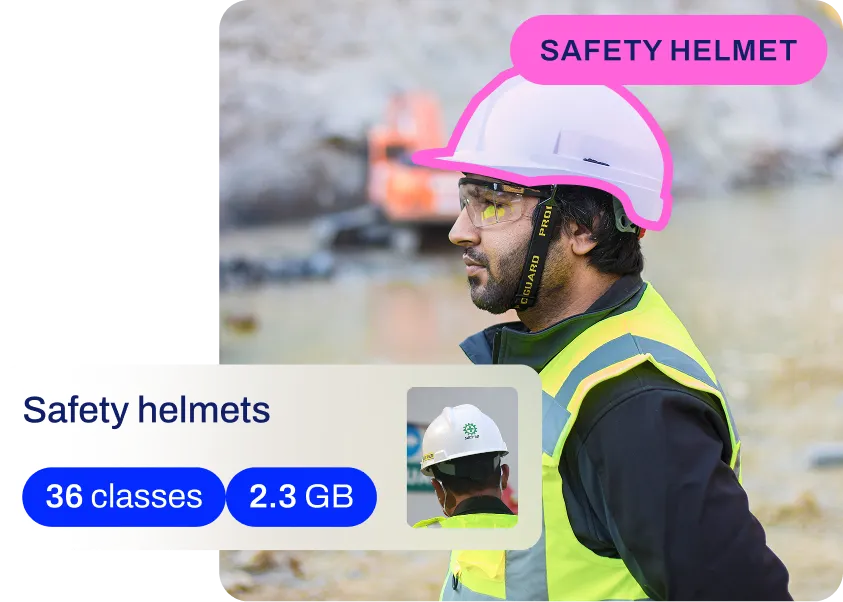Backbone
Discover the role of backbones in deep learning, explore top architectures like ResNet & ViT, and learn their real-world AI applications.
A backbone is a core component of a
deep learning model, particularly in
computer vision (CV). It functions as the
primary feature extraction network, designed to
take raw input data like an image and transform it into a set of high-level features. These
feature maps capture essential patterns such as edges,
textures, and shapes. This rich representation is then used by subsequent parts of the network to perform tasks like
object detection,
image segmentation, or
image classification. The backbone is the foundation of a
neural network (NN) that learns to
"see" the fundamental visual elements within an image.
How Backbones Work
Typically, a backbone is a deep
Convolutional Neural Network (CNN)
that has been pre-trained on a large-scale classification dataset, such as
ImageNet. This pre-training, a form of
transfer learning, enables the network to learn a
vast library of general visual features. When developing a model for a new, specific task, developers often use a
pre-trained backbone instead of starting from scratch. This approach significantly shortens the time needed for
training custom models and reduces data requirements, often
leading to better performance. The features extracted by the backbone are then passed to the "neck" and
"head" of the network, which perform further refinement and generate the final output. The choice of
backbone is often a trade-off between accuracy, model size, and
inference latency, a critical factor for
achieving
real-time performance.
The following code demonstrates how a pre-trained
Ultralytics YOLO11 model, which contains an efficient
backbone, can be loaded and used for inference on an image.
from ultralytics import YOLO
# Load a pre-trained YOLO11 model. Its architecture includes a powerful backbone.
model = YOLO("yolo11n.pt")
# Run inference. The backbone processes the image to extract features for detection.
results = model("https://ultralytics.com/images/bus.jpg")
# Display the detection results
results[0].show()
Common Backbone Architectures
The design of backbones has evolved significantly, with each new architecture offering improvements in performance and
efficiency. Some of the most influential backbone architectures include:
-
Residual Networks (ResNet):
Introduced by Microsoft Research, ResNet models use
"skip connections" to enable the training of much deeper networks by mitigating the vanishing gradient
problem.
-
EfficientNet: Developed by Google AI, this family of models
employs a compound scaling method that uniformly balances network depth, width, and resolution to create models that
are both highly accurate and computationally efficient.
-
Vision Transformer (ViT):
This architecture adapts the highly successful
Transformer model from
natural language processing (NLP)
for vision tasks. ViTs process images as sequences of patches and use
self-attention to capture global context, a
departure from the local receptive fields of traditional CNNs.
-
CSPNet (Cross Stage Partial Network): As detailed in its
original paper, this architecture improves learning efficiency by
partitioning feature maps to reduce computational bottlenecks. It is a key component in many Ultralytics YOLO
models.
Backbone vs. Head and Neck
In modern
object detection architectures, the
model is typically separated into three main parts:
-
Backbone: As the foundation, its role is to extract feature maps at various scales from the input
image.
-
Neck: This component connects the backbone to the head. It refines and aggregates the features from
the backbone, often combining information from different layers to create a richer representation. A common example
is the Feature Pyramid Network (FPN).
-
Detection Head: This is the final
part of the network. It takes the refined features from the neck and performs the main task, such as predicting the
bounding boxes, class labels, and confidence scores
for each object.
The backbone is therefore the fundamental building block of the entire model. You can explore a variety of
YOLO model comparisons to see how different architectural choices
affect performance.
Real-World Applications
Backbones are essential components in countless AI applications across various industries:
-
Autonomous Vehicles: In
self-driving cars, robust backbones like ResNet
or EfficientNet variants process imagery from cameras to detect and classify other vehicles, pedestrians, and
traffic signals. This feature extraction is critical for the vehicle's navigation and decision-making, as
demonstrated in systems developed by companies like Waymo.
-
Medical Image Analysis:
In healthcare AI solutions, backbones are used
to analyze medical scans like X-rays and MRIs. For instance, a backbone can extract features from a chest X-ray to
help identify signs of pneumonia or from a CT scan to find potential tumors, as highlighted in research from
Radiology: Artificial Intelligence. This assists radiologists in
making faster and more accurate diagnoses, and models like YOLO11 can be fine-tuned for specialized tasks such as
tumor detection.












